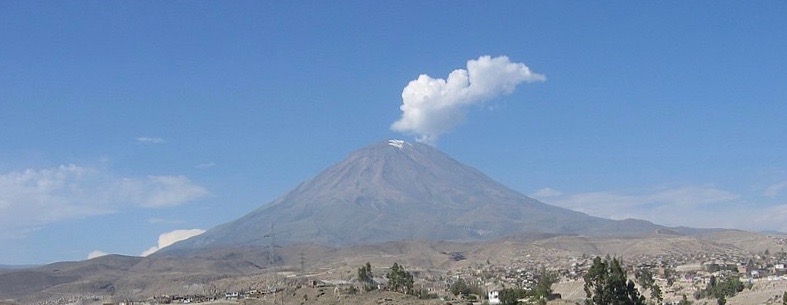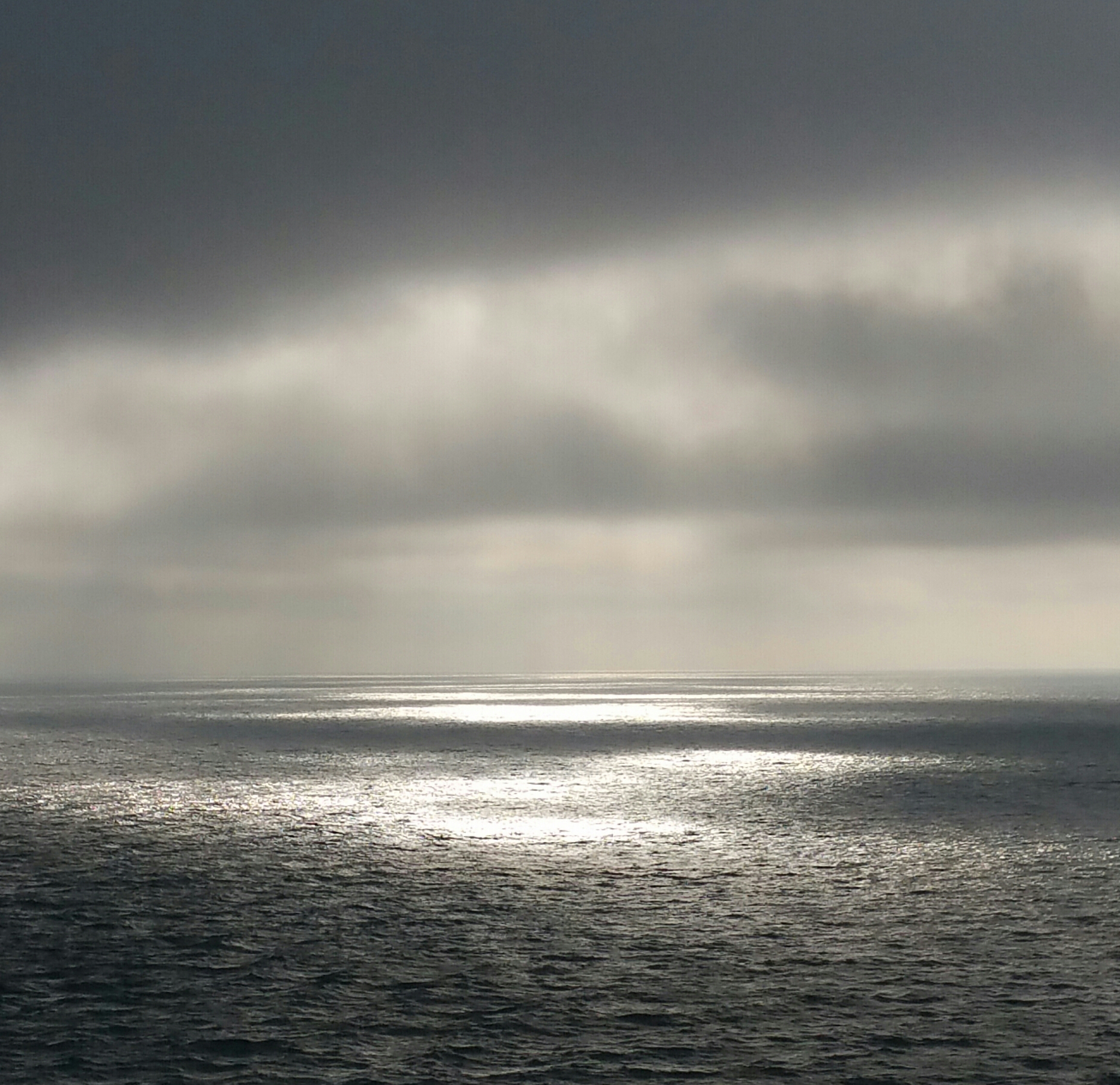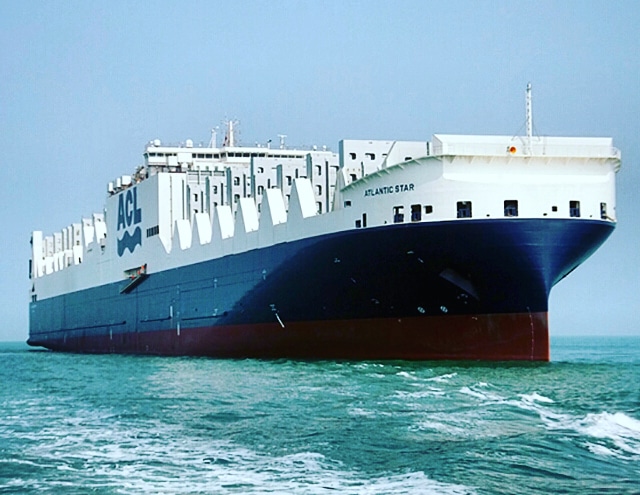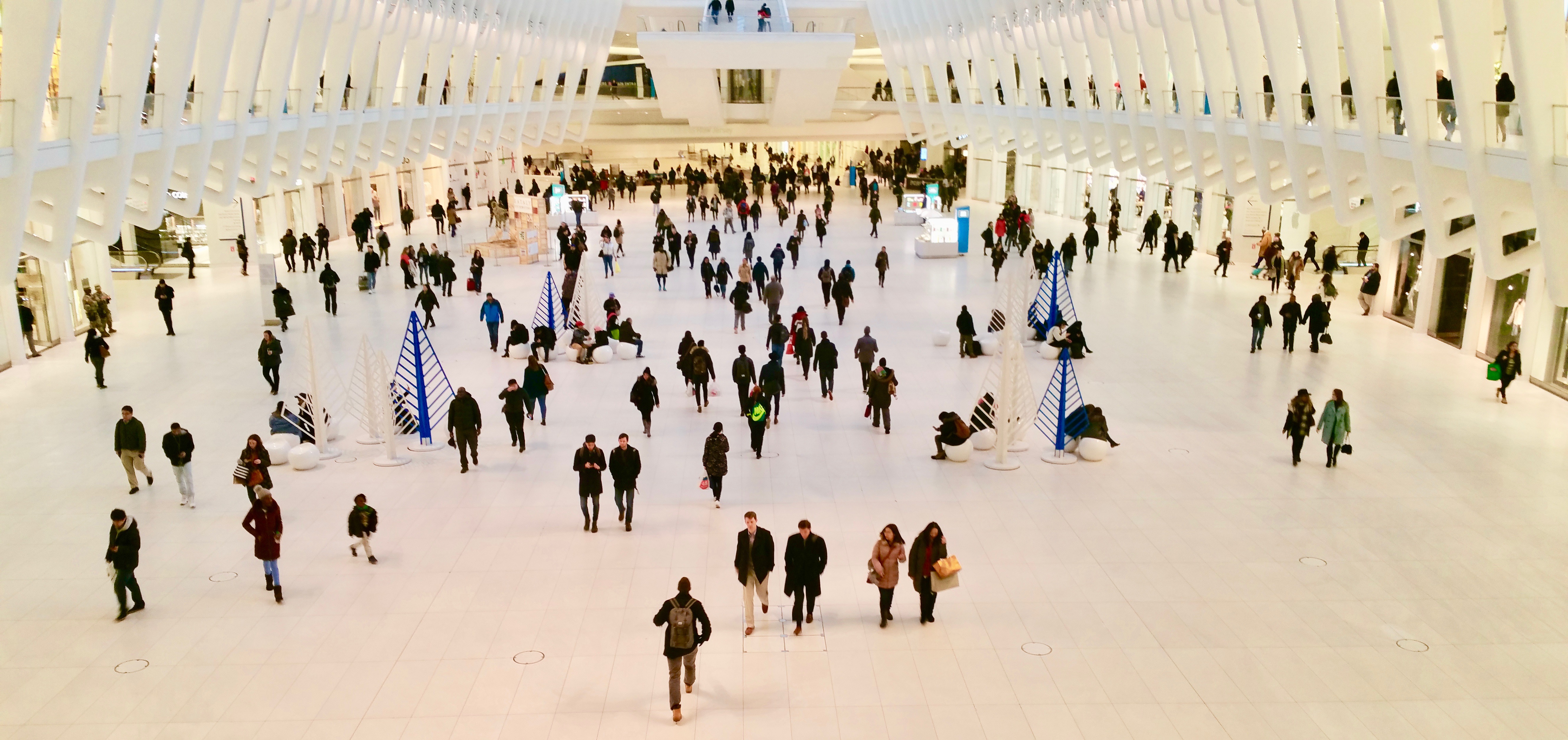The modus operandi on a cargo voyage is to get freight to it’s destination as quickly and cheaply as possible. But as a passenger on a container ship, the journey is of much greater interest. That was certainly the case for me, as I sailed from New York to Liverpool, via Baltimore, Portsmouth and Nova Scotia. This is the first of a two-part post, recalling my voyage across the Atlantic Ocean on a container ship.
Planning the Voyage
When I announced that I would be making a 4,200 nautical mile Atlantic voyage on a cargo ship, it was greeted with a tepid response. Freighter travel certainly isn’t conventional. But traveling on a container ship differs only from cruising in that it demands that you must your own entertainment. There are many hours to be wiled away while rolling on the ocean waves. That is exactly what attracted me to freighter travel. There are no lines, no steadfast rules, restricted areas, crowded decks or noisy night-clubs. What is lost in terms of organized entertainment during cargo travel, is regained ten-fold by tranquility.
Growing up in Donegal, I was always fascinated by the ocean. Watching sunsets over the Atlantic, I often wondered what lay beyond the horizon. In my thirties, I surfed (badly!) on Donegal’s Atlantic coast, and was again drawn by the mystery of just how far those waves had traveled across the ocean to wash up on Ireland’s Wild Atlantic Way. In 2014, I found meditation while sitting on a clifftop high above the ghost fishing village of Port, in south west Donegal. Once again I felt lured by the great watery beyond.

Sunset over the Atlantic, in Donegal Ireland.
But the moment when I really decided to take a voyage across the ocean came thousands of miles from Donegal – and far from the ocean. I was in Utah; the third state on my solo bike ride across America on Trans-Atlantic Cycle. It was over 100 degrees in the Great Basin Desert and the Canyon-Lands, and I was in serious trouble. Dehydration and sickness had slowed my progress, yet somehow I had to keep going. To distract myself, I visualized the Atlantic Ocean. My body was suffering, but I hydrated the mind by meditating and visualizing the ocean. Later, while recovering in Moab, where the temperature hit 110 degrees, I had a dream about crossing the ocean to Ireland. And that is how the notion of taking a freighter ship first took hold.
After a little bit of searching, I found a company in New Zealand called Freighter Travel (NZ). The owner, a Scot named Hamish, hooked me up with passage aboard the Atlantic Star. What had started out as a visualization was now becoming a reality.
Setting out on the Voyage
On the day of departure, New York City gave me one final reminder as to why I was heading out into the ocean. Traffic, public transport delays and weather conditions all threatened to sabotage my embarkation. Somehow though, I made it to the dock on time, and hauled my suitcase up the five-story gangway.The Atlantic Star sits dockside like one of the many co-op apartment buildings where I live in Jackson Heights, Queens. Indeed, at three times the length of a football pitch, the large container ship is comparable in size to an entire New York City block.

At 100,000 tonnes and capable of carrying 3,800 containers and 1,300 automobiles, the Atlantic Star is about the length of a New York City block!
Exhausted, I made it to my spacious en-suite cabin, and was then shown to the ‘Mess Room’ where ‘Messman’ Lucio, and the ships cook, ‘Jose Castillo Jr’, had lunch ready and awaiting my arrival. I was then free to wander out onto the deck at my leisure, from where I watched the sunset. Finally, I could relax.

My spacious en suite cabin on the Atlantic Star
The only other passenger to board was Jim from the state of Montana. He had recently returned from a two year Peace Corp post in Mongolia. Before settling back into a political administration job in Washington DC, Jim was setting off to travel the world. Or at least as much of it as he could see before his money would run out. That would not be for some time if continuing to travel on a container ship.
The captain of the Atlantic Star and two of his officers were from Bulgaria. There was a single Russian officer on board. His only communications offering was to wish everyone a “good appetite” upon entering the Mess Room. The remaining two officers and crew were Filipino. Coupled with the English registered ship operated by an American company on behalf of an Italian family, it was quite the international affair. Especially since the Atlantic Star would be calling in Canada, Belgium, Germany and Sweden.

Leaving New York City to begin the Atlantic voyage
After the sun had set over New Jersey, the ship was slowly cajoled from her berth by a pair of hard-working little tug boats. She was nudged around in situ, and then under her own steam, began to weave her way past Staten Island, and out into New York harbor. As darkness fell, the Manhattan skyline came out to wish us a bon voyage. Several minutes later, the Atlantic Star passed under Verrazano Narrows Bridge. In silence, and against the reflected colorful lights of Coney Island, we left New York behind and sailed into the night.
Voyage to Chesapeake Bay
Freighter travel is far removed from other forms of transportation. Container ships have dynamic schedules, based on where they can do business. Cargo takes precedence over people, so you just have to kick back and roll with the random stops. With port calls, weather and sea conditions in a state of flux, one or two things remain constant. There is always rolling and pitching on the ocean swells, and there are always three meals a day; breakfast at 7am, lunch at noon and dinner at 6pm. Everything else is subject to change at short notice. In the case of my voyage on the Atlantic Star, we first had to sail southwards along the Jersey shore. Two stops awaited in Chesapeake Bay, before once again calling in New York, and then onwards to Nova Scotia. Only then could I finally cross the Atlantic Ocean. I had been disappointed to hear about this improvised itinerary, but the ocean has no tolerance for impatience. As it transpired, the voyage along the eastern seaboard was one which was very well worth taking.

Taking it easy on the deck of the Atlantic Star container ship

View from the top deck of the Atlantic Star ship
On our first day at sea we sailed under a beautiful late summer sun. I pulled out a deck chair and basked in the golden warmth until I fell asleep. In the moments before I drifted off to sleep, a feeling of complete relaxation and serenity submerged any lingering New York stressors. Meditating while rolling on the ocean waves certainly had a magically transformative effect. While my sleep may have been short, it eclipsed the majority of sleeps I have had on land. That is exactly the essence and beauty of freighter travel – the world is a world away.
I awoke when the sun careered along on it’s arc at an usual rate, casting a sudden shadow on my bliss. While I had dozed peacefully on deck, the ship’s big propellor had come to a standstill. We were now drifting, which explained why the sun had switched sides! Was it now on the port or starboard? Alas I was not yet fluent in ship-speak. The Atlantic Star now lay in wait at the mouth of Chesapeake Bay, slowly rising and falling over the swell. Later in the evening, a pilot climbed aboard, and guided the ship up through Chesapeake Bay. Watching the pilot boats arrive alongside the huge ship, and seeing the brave pilot step onto a vertical rope ladder to climb up the outside of several decks was one of the most amazing sights of the entire voyage. Quite remarkably, these brave men have been steering ships into the Chesapeake in one form or another since 1640.
Surprisingly, while at the busy Dundalk Marine Terminal in the port of Baltimore, the Atlantic Star was officially christened, despite having already been at sea for over two years. I took this as a good omen ahead of my epic voyage! During the ceremony I rubbed shoulders with senior figures from the local shipping industry. I also exchanged pleasantries with the owner of the ship, a Mr Grimaldi from Naples, Italy. This little party on the bridge afforded me the opportunity to learn a great deal more about the Atlantic Star, and her role within the shipping industry. Over canapés, my Irish accent was the cause of some hilarities. When asked by a freight forwarder what my role was on the ship for the christening, I replied that I was a passenger. Somehow, my Donegal twang caused a kink in communications, and for some time a group of people thought I was the pastor!

Moving containers around like playing Lego or Tetris!
As a crewman swept up the broken glass from the champagne bottle on the deck of the ship, several huge gantry cranes, aided by an assortment of trucks and machines on Baltimore’s spacious docks, loaded and unloaded hundreds of containers. It was quite a show. The ships ramp was also lowered onto the dock, to accommodate loose freight on trailers, and an small yet eclectic mix of vehicles. It was at this point that I learned we would be sailing across the Atlantic at about half capacity. America’s import/export imbalance with Europe was laid bare on that dock in Maryland.

Cat diggers sitting on the dock at Baltimore, dwarfed by the size of the Atlantic Star.

Containers, Containers, Containers!
The following morning, we set sail back down the bay and passed through (over?) Chesapeake Bay Bridge/Tunnel. An engineering masterpiece, the bridge spans eighteen miles of water, twice dipping into mile-long tunnels in the middle of the bay. For many, the unique challenge of making such a bay crossing develops into a phobia. Amazingly, many people pay a premium toll charge to have an driver take their car across. Presumably these paying customers then close their eyes while crossing the bridge. How strange it was to look on both sides to see the bridge and highway suddenly plunge into the Chesapeake depths, and to know that cars and trucks were busy crossing beneath the waters that the ship passed over.

The Chesapeake Bay Bridge plunging into one of two mile long tunnels under the bay

Changing weather on Chesepeake Bay. As it turned out, this was also summer giving way to fall.
Later, under a blanket of heavy grey cloud, we slipped through the major US Naval base at Norfolk, Virginia, to an overnight berth at Portsmouth docks. Here, just as in Baltimore, cargo was loaded/unloaded by giant gantry cranes. Watching the 40 foot containers being lifted up and moved around was like witnessing a giant game of Tetris.
Before dawn we left the Chesapeake behind, returning to the Atlantic and sailing back up along the US coast, this time through inclement weather. A first taste of ocean conditions was revealed, due to the large swell coming in against the starboard side. I was no up to speed with ship-speak, having had the first of many interesting conversations with the ships officers. I was welcome on the bridge at any time and made full use of the invite to ask a plethora of questions about the ship, the seascapes and the shipping industry. It was interesting to hear the officers reveal that they did not know what was being transported in each of the thousands of containers stacked up on the decks. Presumably someone in the shipping company would know, but it was irrelevant to the crew. Whether it was three pick-up trucks stacked one with its front wheels resting on the others bed, a priceless art collection on route to a new museum, or a bunch of heavy parts for machinery mattered little at sea. On the ocean wave they are all but containers.
ACL has the admirable record of not having lost a container at sea for over 30 years. This is not the case for other companies. My friend Johnathan, who has worked for a yacht delivery company, and in the process sailed around the world, told me before my departure from New York that floating containers in the ocean represent a serious danger to yachts. I even heard of cases where valuable BMW motorcycles had once washed ashore in shipping containers on the south eastern coast of England. Apparently there wasn’t a farmer on that twenty mile stretch of coastline but who was now the proud owner of a touring motorbike. I was later told by a fellow passenger that almost none of the many and frequent shipping accidents make it into the news. With few eyewitnesses and insurance provided by a sole insurance company (Lloyds of London), containers slip silently into he depths, or worse still, lurk semi-submerged in the pathway of other ships.

A lost shipping container floating on the ocean surface
The ten degree rolls off the Jersey shore served as a marine lullaby, rocking me to sleep like a baby in a crib. An experiment with a drug called dramamine, which prevents motion sickness had caused drowsiness, so I abandoned the dose at that point. My sea legs were holding up just fine anyway, despite the increasing swell and the stories of unreported shipping accidents.
When docked once again in New York, Jim and I joined several crew members on a trip ashore. It felt so strange to be in the New York metropolitan area as a passing visitor. The weather had really taken a turn for the worse now, with non-stop torrential rain and high winds. No one as much, but I think we all wondered what lay in store on our Atlantic voyage. Onwards the Atlantic Star ventured though. After clearing Montauk on the eastern end of Long Island, and sailing north east off the coast of Cape Cod and Martha’s Vinyard, the ship docked in Halifax, Nova Scotia. Again, the weather was foul. I did manage to venture ashore though, motivated by what would be a brief first visit to Canada.
Nova Scotia and the Titanic Graves
The main attraction in Halifax, apart of course from the beautiful city and harbor panoramas, is Fairview Lawn Cemetery. This leafy graveyard serves as final resting place for the majority of those lost during the sinking of the Titanic. Among the many graves is a headstone with the inscription “J. Dawson”. There is a distinctly worn patch of lawn right in front of the stone. Apparently, many visitors stop by the grave, assuming it to be that of Jack Dawson – the character played by Leonardo diCaprio in the 1997 blockbuster movie Titanic. Alas, the J. Dawson in Fairview Lawn Cemetery was but a 23-year old crewman, who had shoveled coal to the furnace men deep in the bowels of the Titanic, as she sailed towards her fatal collision with an ice-berg. The Jack Dawson from the silver screen is entirely fictitious, despite what thousands of romantic movie-loving visitors to Nova Scotia would like to believe. The irony of visiting graves from a famous shipwreck just hours before setting off to cross the Atlantic Ocean was not lost on me, particularly given the stormy weather conditions.

Titanic Grave Site at Fairview Lawn Cemetery in Halifax, Nova Scotia

Five More Passengers!
The terrible weather had caused a pair of Canadians, who had been due to board the Atlantic Star in Halifax, to abort their voyage before it had even begun. Five more passengers did board though. A likable 82 year old German man (who Jim from Montana and I secretly called “Helmut”) was joined by French and Italian couples. Michele and Robert Gailleton, from near Lyon, were returning to Europe having just finished touring the Americas and Canada. They had arrived in Uruguay via Senegal with their 1995 Land Rover camper van two years previously. Unsurprisingly they had many tales to share about their epic journey. Their adventure can be tracked here.

The 1995 Land Rover Discover, used by Michele and Robert Gailleton on their tour of the Americas.
Giuesspe Altinier and Sandra Verzola from Venice, were also returning home after having clocked up 40,000 Km’s in six months of touring across the United States and Canada, again by camper van. They had focused primarily on visiting America’s great national parks. “Helmut” was by far the veteran old man of the sea though. He had spent his entire life exploring the worlds oceans. Born and raised on Germany’s North Sea coastline, he started out as a young trawler fisherman, venturing as far north as the east coast of Greenland. He then spent time in the Merchant Navy before moving on to work on oil tankers and managing refineries. He spends his retirement taking voyages around the world on container ships, to relax and reminisce about his life at sea.

Atlantic Star passengers (L-R): Giuseppe Altinier (Italy), Jim Frisk (USA), Sergia Verzola (Italy) and Michele and Robert Gailleton (France). Missing from the picture is “Helmut” from Germany.
As darkness fell we left our sheltered berth in Nova Scotia. Slowly the tree covered islands which dot the entrance to the harbor slipped by, as we set out to cross the Atlantic Ocean on the world’s largest ro-ro container ship. Watching the ever weaker lighthouse beam from Nova Scotia slip beneath the blackened horizon, served to throw up a few moments of anxiety regarding the enormity of the voyage that lay ahead. These brief thoughts were soon quelled by mindful meditation. A cargo voyage is about enjoying whatever unexpected sights and experiences might rise up from the horizon up ahead, so I fully committed to sit back and enjoy the ride. I had little choice in the matter, given that I was now finally in the Atlantic Ocean.
Part two of this post is coming soon!










































